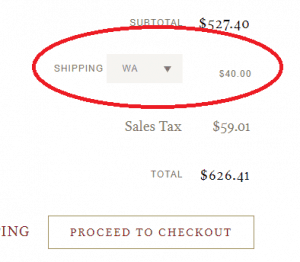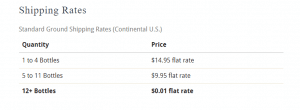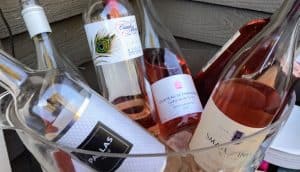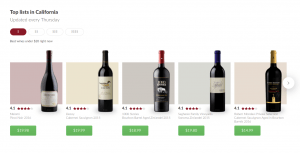I just had an intensely uncomfortable experience.
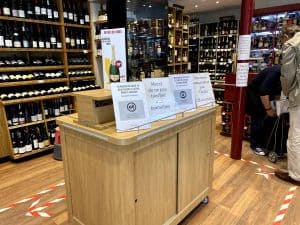
Since France started easing Covid restrictions on May 11th, I’ve been itching to get out of the house. So today I took the plunge and walked to my local wine shop to pick up a few bottles. When I got there, I made a note of the shop’s safety precautions posted outside.
Everyone must wear a mask.
Only two customers allowed in the store at once.
Maintain at least 1-meter distance from other people.
Once inside, I noticed the tape delineating the one-way race track that we were to take as well as a new precaution. Customers could not touch any of the bottles-only clerks. While this all made sense and I understood fully why it had to be this way, I still have to confess that seeing that sign made my heart sink.
One of my great joys as a wine lover is browsing the shelves, picking up bottles that catch my eye to take a closer look. Sometimes I want to read the back label (particularly with blends) to find out more details. Other times I want to see if it is a fat ass heavy bottle that I can promptly put back on the shelf.
But even if I had disposable gloves, no way was going to happen.
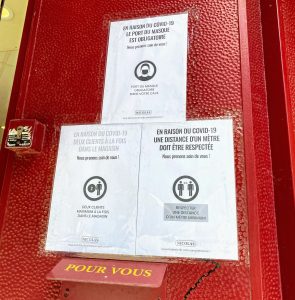
The signs outside the shop where we waited our turn to enter.
Which was fine to do on a lovely May day, but can easily get quite unpleasant during poorer weather.
It’s clear that in the age of Covid and social distancing, you do not browse. Everything is “Get in. Get out. Go.” There was no way to not be keenly aware of the customers outside and the one lingering just a meter inside, waiting for me to get done. And I certainly wasn’t going to be that asshole.
There was no time for decisions, so I just told the clerk what I was broadly looking for; an AOC Chablis, an Alsatian Pinot gris and a white Bordeaux with (hopefully) a high percentage of Semillon. Then I took whatever the clerk pointed to. No quibbling over the dryness of the Pinot gris or what the cépage of the white Bordeaux was. Just go.
And while I did it and I accepted what I got, it was still a thoroughly terrible shopping experience that I’m loathe to repeat.
This isn’t about the tired joke of French customer service but rather the realities of the new world that we’re living in. It’s not hard to picture similar scenarios playing out in small wine shops in the US or elsewhere. While the staff may have the best of intentions to offer excellent service, they’re going to be restrained by space and time limitations. Restaurants too. If a place can only serve a fraction of the customers they had before, it’s going to be more imperative to get those customers quickly in and out so you can move on to the next one.
The days of browsing the shelves and having friendly, relationship-building chats are going to be on hold–for who knows how long.
And, damn, does that suck hardcore.
I couldn’t wait to get out of that wine shop. It had nothing to do with worrying about getting sick or the service. I’m sure the wines that the clerk picked will be fine. But rather it was the complete absence of joy in shopping for something that is usually quite joyful.
I honestly don’t know when I’ll be back–to that or any other wine shop. I’m comfortable with shopping online so it’s easy to turn that.
But wine shopping online is often not that joyful either.
While there are good online wine shops out there, quite a few are seven shades of “Ugh.” Especially the ones run by traditional brick & mortars who are quickly trying to cobble together an online presence. Among my biggest pet peeves:
Out of date info–especially with blends and vintages.
No label pic or, just as bad, an old label picture from 7 years ago.
Lack of info about the wine beyond a bland, generic tasting note.
Poor user interface for completing the sale.
But even for the well-designed sites, it’s hard to mimic the in-person experience. Just like our socially distant shop, I can’t pick up the bottles to get a better look. Scrolling through a parade of bottle pics doesn’t have the same effect as looking at wine shelves or bumping into a case stack when it comes to highlighting new and unexpected wines.
Instead, online wine shops almost always play it safe, featuring prominently on the front page and at the top of all searches their bread and butter wines. The sites that focus on crowdsourced user ratings are often the worst at this. You have to wade through a lot of “blah” before finding any “oooh.”
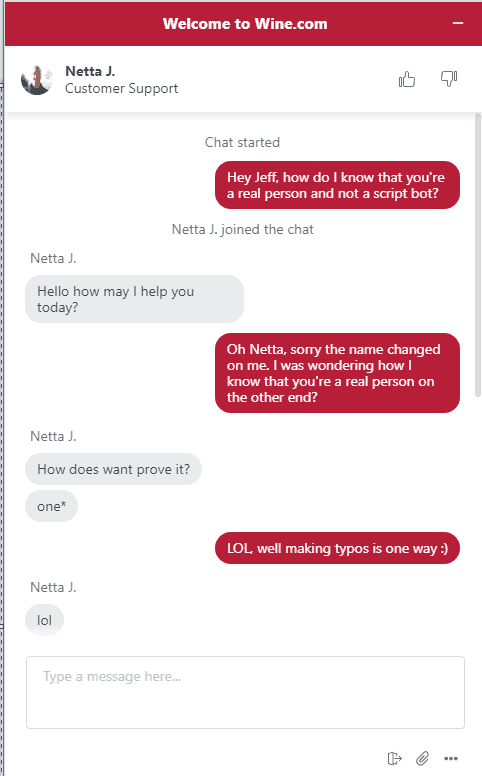
Of course, this could just be what the AI wants me to think….
Then there is the lack of interaction with other wine folks. While I rarely need help picking out a wine, sometimes I do want to hear about what’s new and exciting at the shop. That’s another thing that is hard to duplicate online. Some websites, like Wine.com, utilize chat boxes. While they may be real people on the other end (as I tested recently), it’s hard to build a virtual relationship with a screen name.
They could be delightful and know their stuff, but I can’t hear the enthusiasm in their voice or pick up body language clues that paint a deeper picture. It’s hard to read sincerity via text.
However, I’m not sure about the personal concierge services using Zoom and other platforms.
I haven’t experienced them yet. Mostly because all the ones I hear about are based in the US and UK. The idea certainly sounds promising. I just don’t know if I truly want that intense of a wine relationship.
I don’t need someone checking in on me every time I want to buy wine. As I said, most times I’m completely okay on my own. Rather what I would want is a more casual “Somm with Benefits” kind of relationship. Someone that is there–and consistently the same one or two people–when I need them, but aren’t that clingy and trying to pester me all the time with their latest offers and recommendations.
Essentially, I want a relationship like my local brick & mortar sales clerks. A relationship that I define on my own terms. Sometimes I want help; sometimes I don’t. But when I’m in the mood for a quickie wine recommendation or a geeky conversation, they’re my go-to’s.
But above all, with online shopping, I want some joy.
I want to be greeted with a front-page that surprises and intrigues me–not bores me to tears. If I have to accept cookies so that the site recognizes me to offer something more curated, so be it. That potentially could offer even more value than a brick & mortar experience.
I want something not so sterile and impersonal. The sites that are incorporating more video snippets about producers have been leading the way. Again, this enhances the experience and adds more value.
And I want interaction–but not too much interaction. No annoying “Can I help you” pop-ups and pestering emails. I don’t want the virtual equivalent of a car salesman.
I just want to enjoy shopping for wine.

